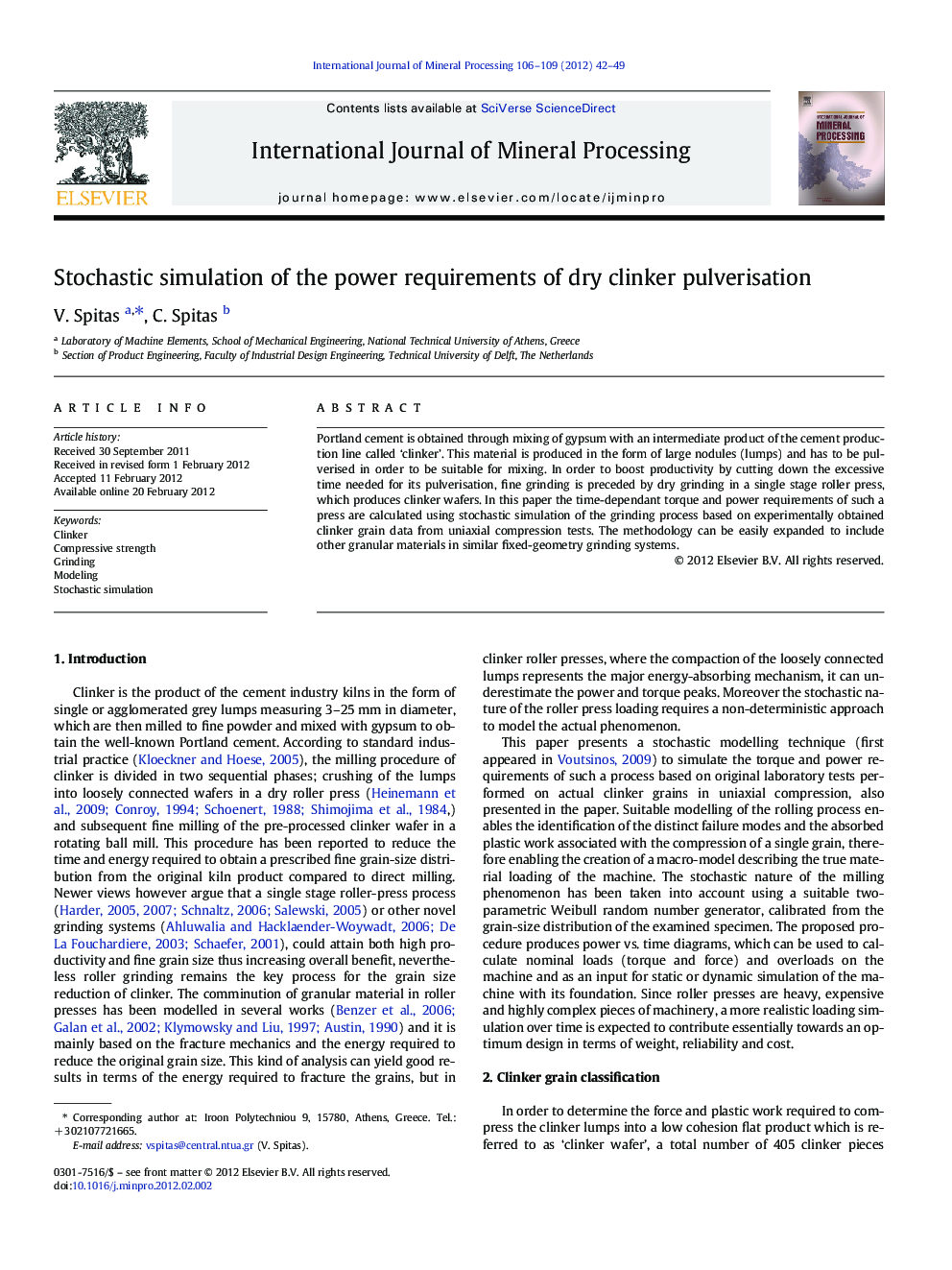| Article ID | Journal | Published Year | Pages | File Type |
|---|---|---|---|---|
| 214161 | International Journal of Mineral Processing | 2012 | 8 Pages |
Portland cement is obtained through mixing of gypsum with an intermediate product of the cement production line called ‘clinker’. This material is produced in the form of large nodules (lumps) and has to be pulverised in order to be suitable for mixing. In order to boost productivity by cutting down the excessive time needed for its pulverisation, fine grinding is preceded by dry grinding in a single stage roller press, which produces clinker wafers. In this paper the time-dependant torque and power requirements of such a press are calculated using stochastic simulation of the grinding process based on experimentally obtained clinker grain data from uniaxial compression tests. The methodology can be easily expanded to include other granular materials in similar fixed-geometry grinding systems.
Graphical abstractFigure optionsDownload full-size imageDownload as PowerPoint slideHighlights► The energy absorbed in wafering is mostly due to compaction than to fracture itself. ► The rolling press power consumption can exceed the mean value by a factor of 2.5. ► Rolling press power requirements depend considerably on grain size distribution. ► The presented technique does not require the knowledge of the fracture mechanism.
